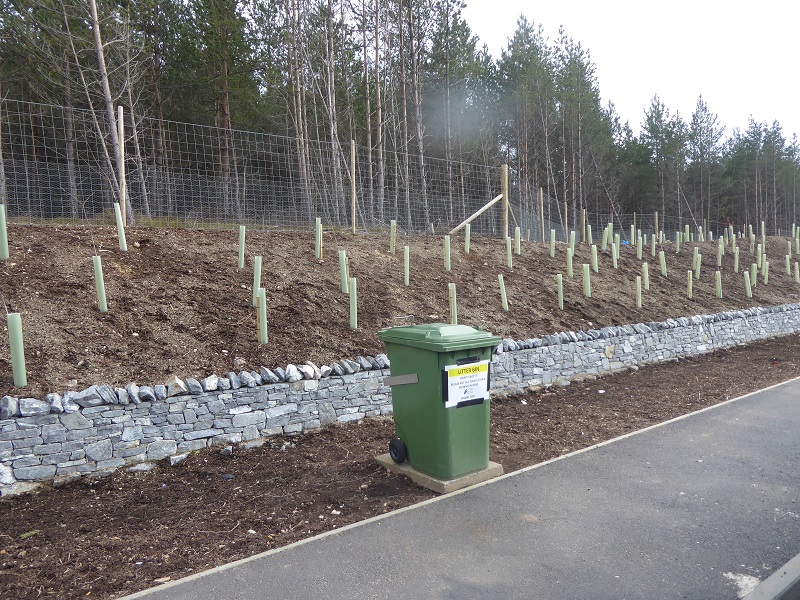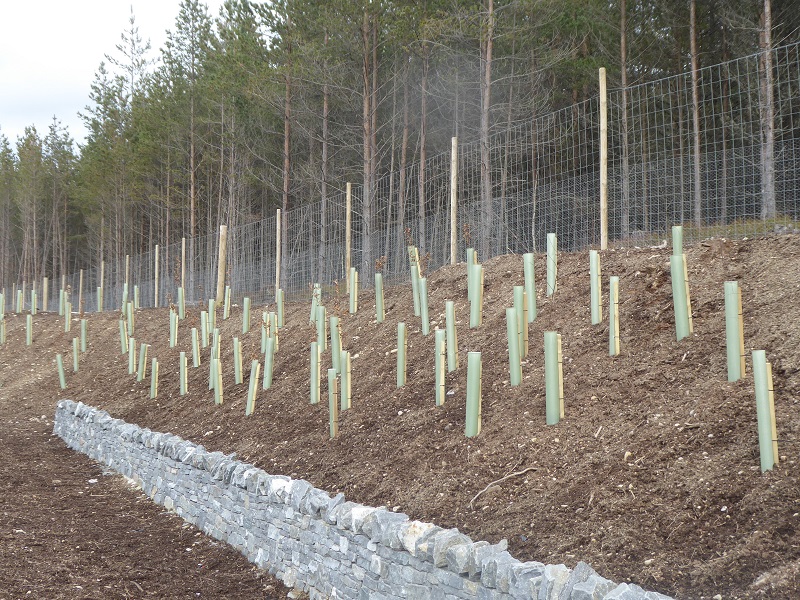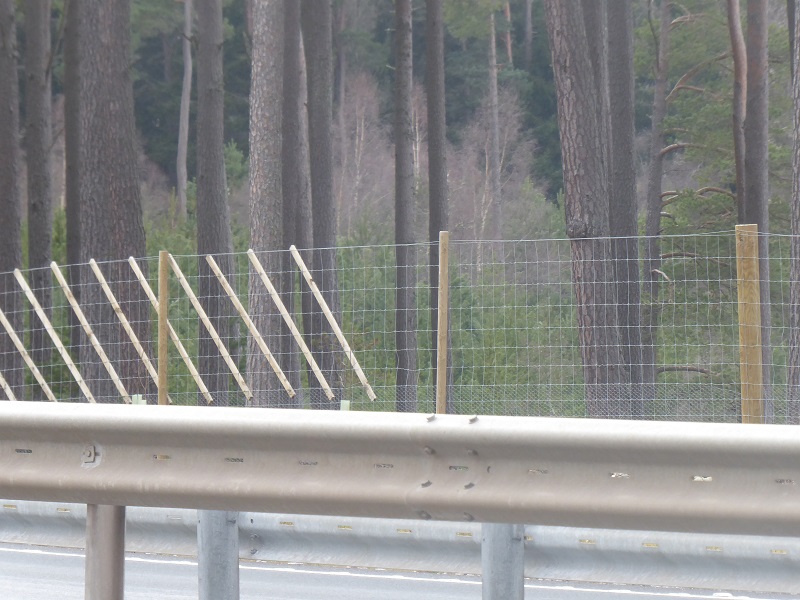
A couple of weeks ago I stopped at at one of the two laybys on the new section of A9 dual carriageway between Kincraig and Dalraddy. Its been nicely landscaped and provided with a bin, unlike the laybys on the A82, thanks to Highland Council but is too close to the road to be a pleasant place to stop. What struck me most though was the deer fencing.

The deer fencing presents a barrier to both humans and wildlife and has turned much of this section of the A9 into something more akin to a motorway than an A Road. Its become a transport corridor that slices part of the National Park in two.

The Strategic Environmental Assessment for the A9 dualling project (see here) recommended that deer fencing was to be a last resort and also highlighted that it is one of the main causes of death to capercaillie. Unfortunately, as highlighted in the most recent Cairngorms Campaigner, the excellent magazine of the Cairngorm Campaign, some of the deer fencing has not yet marked to prevent capercaillie collisions months after the main works were completed. This is despite the capercaillie being the priority species for conservation in the Cairngorm National Park. How many capercaillie,black grouse and other birds vulnerable to deer fence collisions will die before this work is finished?
The mitigation for this fencing – which I cannot find on the consultation plans (see here) but which is mentioned in the dualling project community newsletters – is that four existing underpasses on this section of road were to be upgraded (that’s one every 1.75 km) and a number of mammal crossing points put in place. No consideration appears to have been given to the impact on mammals that are unlikely to use such crossing points or on other creatures. Its hard to see how the creation of a bug hotel at a local school by the contractors (see here), however well-intended, can compensate for the ecological impacts of dividing several kilometres of land in two.
The justification for deer fencing is partly to prevent deer causing car accidents but also to prevent other wildlife becoming road kill. However, balanced against this is if the Kincraig-Dalmally model is replicated elsewhere the impacts will be immense. In recreational terms imagine being separated from your car by kilometres of deer fencing in places like Drumochter. There would need to be paths on both sides of the road and regular gates in the fence, including by every layby, for people still be able to access the hill. In any open country, where deer numbers tend to be even higher, and therefore the justification for fencing on safety grounds stronger, the landscape impacts would be signficant. And then there are the potential ecological impacts in areas such as Kinveachy, north of Aviemore, where there are significant native woodland restoration proejcts and where, instead of linking bits of Caledonian Forest, the new road will be fragmenting them further.
There is a radical solution to these conflicting priorities and that would be to underground short sections of the A9. This would reduce landscape impacts and maintain ecological connectivity. Instead of road cuttings, tunnels. Scotland though is way behind other countries when it comes to tunnelling and Transport Scotland unfortunately appears unwilling to consider such solutions. The cost to our National Parks – and the upgrading of the A82 along Loch Lomond is to consulted on later this year – is likely to be immense.
I hope to come back to the impacts of roads in our National Parks in future posts.
or wildlife crossing bridges rather than tunnels
That’s what they are I always thought that they were for stopping humans. Nice wall how much did they waste on that ?
And deer only aproach roads at car parks they are like the fabled lemmings pesky beasts .
As a regular user of the rly line to Inverness which runs parallel to the proposed dual A 9 neat the Slochd summit
N. of Carrbridge, the current road always looks much quieter than most UK roads, so I think the stretch N. of Aviemore is simply a LEGACY PROJECT put forward by a politician wanting to boast ‘I fixed that!’! – John Davis